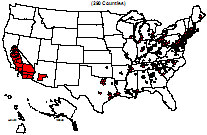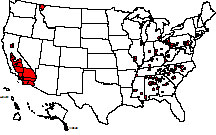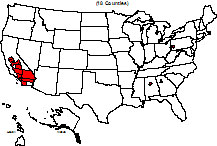Cleaner AirClear Skies Initiative – A Clean Air Act for the 21 st Century"People need certainty when it comes to planning. People need to know the rules are going to encourage investment and change, not discourage it. People need to know there's going to be less lawsuits that prevent rational thought from going forward. People in this country must understand that we can have a pro-growth agenda, a pro-job agenda and a pro-environment agenda at the same time, and Clear Skies legislation is just that." President George W. Bush Policy Snapshot: Clear Skies Initiative President Bush's Clear Skies Initiative will dramatically improve air quality by cutting power plants' emissions of SO 2 , NOx, and, for the first time, mercury, by approximately 70 percent, more than any other Presidential clean air initiative. This historic proposal will bring cleaner air to Americans faster, more reliably, and more cost-effectively than under current law. To help states meet the new air quality standards, President Bush announced the most aggressive Presidential initiative in American history to cut air emissions of nitrogen oxide (NOx), sulfur dioxide (SO2), and mercury from power plants. The Clear Skies Initiative was sent to the Congress by the President in 2002 and re-introduced in February 2003. President Bush’s initiative would dramatically improve air quality by cutting power plants’ emissions of SO2, NOX, and mercury, by approximately 70 percent, more than any other Presidential clean air initiative. Clear Skies legislation will reduce emissions further, faster, with more certainty and at less cost to American consumers than under current law. Through a market-based trading structure modeled after the proven, successful Acid Rain reduction program of the 1990 Clean Air Act amendments, Clear Skies will remove more pollution over the decade from 2010-2020 than current requirements of the Clean Air Act, reducing the number of premature deaths, hospital trips, and missed days of work and school due to respiratory problems. Clear Skies legislation will also reduce the acid rain affecting forests and lakes in the Northeast, reduce nitrogen loadings into the Chesapeake Bay and improve visibility nationwide. The Clear Skies legislation will reach our ambitious air quality goals through a market-based trading structure that rewards innovation, reduces cost and guarantees results. Instead of the government telling utilities where and how to cut pollution, they will be told when and how much to cut. Utilities will be given a firm deadline and the incentive to identify the most innovative ways to meet it. The government controls the number of allowances that are distributed and reduces them over time. Each facility will be required to have a permit for each ton of pollution it emits. The limited amount of allowances available ensures that required reductions are achieved. By making the permits tradeable, this system makes it financially worthwhile for companies to pollute less, giving them an incentive to make early and cost effective reductions. This program will result in nearly $50 billion of investments in pollution controls on the more than 1,000 existing major power plants, and in the construction of new, well-controlled power plants. Clear Skies provides regulatory certainty and lays out the timeframes necessary for managers to design a cost-effective strategy tailored to both their current budgets and their future plans. With this structure, a principal feature of the President’s National Energy Policy is upheld – improving air quality more cost-effectively, while providing Americans with clean and affordable electricity. Rising natural gas prices have already increased energy bills for many manufacturers. Higher energy costs means companies maybe are less likely to hire more workers and invest their profits in technology upgrades for improved environmental performance. A switch to natural gas could prove too costly to many businesses. Instead, some manufacturers may shift operations overseas, where natural gas is less expensive and environmental protections not as strict, shifting American jobs – and pollution – to developing nations. Implementation of the President’s Clear Skies Initiative will help prevent this from occurring.
|
~CONTENT~Home
Addressing Global Climate Change
A Cleaner, Healthier World Community
President Bush’s Performance-Based FY 2005 Budget ~DOCUMENTS~September 2004 |
||||||||||

- Afghanistan
- Africa
- Budget Management
- Defense
- Economy
- Education
- Energy
- Environment
- Global Diplomacy
- Health Care
- Homeland Security
- Immigration
- International Trade
- Iraq
- Judicial Nominations
- Middle East
- National Security
- Veterans
News
Interact
Your Government
- President's Cabinet
- USA Freedom Corps
- Faith-Based & Community Initiatives
- Office of Management and Budget
- National Security Council
- USA.gov
Appointments
|
Home >
News & Policies >
Policies in Focus
|






